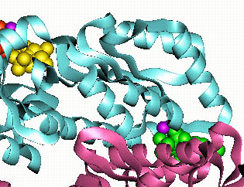
- Genomics
- Transcriptomics
- Epigenomics
- Meta-omics
- Proteomics
- Single-Cell Sequencing
- Immune Repertoire Sequencing
- FFPE Samples

Quantitative Proteomics
 Quantitative proteomics is a powerful approach for discovery of proteins that are differentially expressed across time, disease state, or other conditions. There are several widely used quantitative techniques, including classical gel-based (2DE, DIGE) and LC-MS-based methods. LC-MS-based methods include those that use isotopic labeling (iTRAQ®, SILAC, ICAT, etc.), as well as the relatively new label-free method. Both iTRAQ and label-free methods have been widely used in a variety of studies and have shown to provide reliable quantitative results. Quantitative proteomics can be applied in many research areas, including investigation of disease mechanisms, biomarker screening, disease-resistant breeding, as well as the study of pathogens and functional microbes.
Quantitative proteomics is a powerful approach for discovery of proteins that are differentially expressed across time, disease state, or other conditions. There are several widely used quantitative techniques, including classical gel-based (2DE, DIGE) and LC-MS-based methods. LC-MS-based methods include those that use isotopic labeling (iTRAQ®, SILAC, ICAT, etc.), as well as the relatively new label-free method. Both iTRAQ and label-free methods have been widely used in a variety of studies and have shown to provide reliable quantitative results. Quantitative proteomics can be applied in many research areas, including investigation of disease mechanisms, biomarker screening, disease-resistant breeding, as well as the study of pathogens and functional microbes.
Benefits:
- Flexible choices: Both label-free and iTRAQ quantitation are available.
- High throughput: 8 samples can be analyzed in a single run by iTRAQ, while the label-free method can be used for large-scale samples.
